-
Posts
7,198 -
Joined
-
Last visited
-
Days Won
2
Content Type
Profiles
Forums
Gallery
Events
Blogs
Posts posted by Thalestris24
-
-
3 minutes ago, Thalestris24 said:
I would click on the beta version link. It's possible the ascom driver has been in development and the beta is the best so far...
ps the beta version link returns 21.02.20.13 - must be the latest version!
-
I would click on the beta version link. It's possible the ascom driver has been in development and the beta is the best so far...
-
That looks good! Is that with the beta driver? I think that's the one you have to use. Any response from the qhy forum?
-
8 minutes ago, DaveS said:
OK, I've tried:
Hard restarting the PC
Swapping the too long 5 metre USB 3 for a short USB 2 to the powered hub on the mount
No change in the stupid window.
Swapping back to the too long 5 metre USB 3
No difference
Swapping out the too long cable for an old 3 metre USB 3 that I had kicking around.
Still no difference.
I confess to being totally baffled.
I have registered with the QHY forum, so that will be my next stop. Hey ho, the slow boat to China.
You've missed something, Dave...
 How is the camera appearing in Device Manager?
How is the camera appearing in Device Manager?
-
51 minutes ago, DaveS said:
Thanks Louise.
Going to take a break now as I've been looking at screens for so long today that it's making my eyes go wonky.
When you resurface - nicely refreshed, Dave! I would go through the manual step by step to make sure you have installed it properly i.e. exactly as they describe
 . In particular, make sure the driver shown in Device Manager is correct after you've installed the camera. Reading the qhy stuff again, it's a bit ambiguous when they talk about the 'system pack' on the one hand, and the beta release on the other. If in doubt, check with Mr Q! Also, whenever I've had problems with qhy ascom drivers, I've switched to their system driver and their EZCap_QT software, as a sanity check
. In particular, make sure the driver shown in Device Manager is correct after you've installed the camera. Reading the qhy stuff again, it's a bit ambiguous when they talk about the 'system pack' on the one hand, and the beta release on the other. If in doubt, check with Mr Q! Also, whenever I've had problems with qhy ascom drivers, I've switched to their system driver and their EZCap_QT software, as a sanity check 
Good luck!
Louise
-
9 minutes ago, DaveS said:
Had a look, and nothing untoward showing up.
So you can choose your camera correctly and bring up a screen like this (simulated) one:

You can tick logging which might help by giving you some data.
Louise
-
24 minutes ago, DaveS said:
I've tried running ASCOM diagnostics before with other problems, but unless you're an ASCOM geek they are just gobbledegook. Or should that be gobbledegeek?
Probably don't need to run the diagnostics as such, but it has the choose and connect to device -> camera and look at properties options.
-
It's worth always disconnecting and then doing a cold boot (not just a reset) and reconnect the camera cables in the right order, if specified.
I know these things can drive you nuts - I can empathise!! I'd definitely post on the qhyccd forum (but make sure you have internet security/antivirus running before going anywhere near!). Chances are, if you have a problem, someone else will have posted about the same or similar thing.
Have you tried the Ascom diagnostics?
Louise
-
16 minutes ago, DaveS said:
Yes, I have the latest QHY driver pack. I suppose I should register on the QHY forum and post a question there.
The cable's a bit long for USB 3 at 5 metres, but anything shorter is a stretch, 3 metres is about as short as is reasonable.
5m for usb 3 might be a bit long. I would try usb 2.0 if you can't run a shorter cable. So much trial and error with usb camera connections!
Louise
-
Hi Dave

I take it you installed the current QHY 'system pack' which includes an ascom driver? Qhy are notorious for dodgy drivers, though (in my experience). It's a beefy-looking camera! Lol. I imagine it needs a good quality usb 3.0/3.1 connection. I have an old i5-2500k desktop (from 2012, I think) which has 'usb 3.0' but it doesn't work too well with a lot of things and I can't do anything about it
 Even third party usb 3.0 expansion cards don't work properly a lot of the time, so it's probably down to the chipset. So if there's any doubt, I'd try it in an alternate system, if possible. I take it you posted on the qhy forum? Any suggestions from there? I see you did have it working at one point - yeah, always worth rolling back, even if it's a bit of a pain...
Even third party usb 3.0 expansion cards don't work properly a lot of the time, so it's probably down to the chipset. So if there's any doubt, I'd try it in an alternate system, if possible. I take it you posted on the qhy forum? Any suggestions from there? I see you did have it working at one point - yeah, always worth rolling back, even if it's a bit of a pain...
Louise
-
17 minutes ago, vlaiv said:
Not yet, but I do intend to try - mostly EEVA style - both with phone camera and with dedicated astro camera (still need to get c mount lens for that).
I have this idea that Mak102 is great fast imaging scope
 when "properly" used - in this case afocal method like images I posted above.
when "properly" used - in this case afocal method like images I posted above.
Not going to use it for serious imaging but I do want to try out the approach - I think it is viable option for people just starting out and wanting to get their feet wet - low cost / all around scopes that can do both visual and imaging. Hope that phone adapter / afocal method and proper software support will deal with EEVA / basic imaging requirements.
I've only ever used Sharpcap for eeva - I've no idea what might be available for phones. Do mention my name to alert me if you get anywhere!
 I might have a go myself one of these days...
I might have a go myself one of these days...
Thanks
Louise
-
10 hours ago, vlaiv said:
I can't help but wonder what are you doing exactly. Sorry if I'm being nosy, I'm just interested in "mechanics" of things - how do you plan to use equipment and to what effect.
You say that you need good eye relief EP - to be used by spectacle wearer but then you talk about flat field and afocal method.
My guess is that you are looking for all around EP for daytime use (digiscoping and observing of sorts) - but does it have to be single eyepiece?
You say that you need flat field EP, and that is ok, however, most of field curvature comes from telescope itself. For this reason, I'm guessing that you are using 80mm F/6 with field flattener - which also happens to be reducer (from your sig). You now have F/4.8 scope. There are very few eyepieces that will be corrected to the edge in such fast system and they are expensive.
For digiscoping - you just need certain field stop - focal length and AFOV are not as important as you can adjust things on camera side - by selection of lens on camera (or simply adjusting focal length in zoom lens). Maybe orthoscopic eyepiece would give best performance in this case even if it has narrow AFOV which might not be suitable for observation?
32mm GSO Plossl has as wide field stop as you can get in 1.25" format. Here is a test I did few days ago when I got my smart phone afocal adapter:
Or this one:
Both images are at 25% scale of original. Phone has 4000x3000 resolution but lens is such that it covers more than 50° of FOV so there is some black area in shot.
Btw this is 32mm F/4 achromat finder/guider scope. It is incredible little lens. Plossl fares quite well regardless of the speed of the lens.
Although this was hand held shot (I was holding complete contraption in my hand when I took this) - sharpness is still pretty good in the center of the field. Pidgin is a bit out of focus because it is a bit further away. I think phone focused on branches in front of it.
Here is right edge - not looking bad at all
Left edge is worse - but it might have something to do with phone centering - I did not pay much attention how centered it is - and then there is out of focus due to distance blur:
Hi Vlaiv
I was wondering if you've done an astro imaging through the EP?
Louise
-
7 minutes ago, Louis D said:
Once you have the binocular section focused, hopefully you can move the trinocular eyepiece up and down to reach parfocality and then lock it down as well. You should also be able to focus the trinocular eyepiece using live view from the camera to a monitor screen.
Yes, that's what I did - it's all set up. I've had it up and running with the kit eps and the Starguider for quite a while now

Louise
-
PS it's almost essential to have the image train parfocal with the visual. It's also nice, but not quite so essential, to have the imaging fov the same as the visual
 In the imaging train the 'eyepiece' is being used (afocally by me) as a projection lens, also called a photoeyepiece. Confusingly, advanced users often just call them eyepieces - for a long time I didn't understand what they were talking about!
In the imaging train the 'eyepiece' is being used (afocally by me) as a projection lens, also called a photoeyepiece. Confusingly, advanced users often just call them eyepieces - for a long time I didn't understand what they were talking about!
Louise
-
8 minutes ago, Louis D said:
I was thinking of a single one for the trinocular tube to take low distortion, afocal images. Distortion isn't all that important visually at the binocular viewer.
Ok, though the image quality using the Starguider have probably been good enough. Could always be better, I suppose. I'll dwell upon it

Oh, I previously posted some images of diatoms at 100x in the microscopy section:
Thanks
Louise
-
1 hour ago, Louis D said:
I've updated the comparison image with the addition of a 25mm Abbe ortho eyepiece. Notice the lower distortion and narrower field of view.
Your best bet would be a 32mm Tak Abbe orthoscopic costing £189.00 (with 20% VAT) new for pristine images edge to edge. This would nearly double the cost of your microscope, though.
Well, I'd need 2 of them...
-
53 minutes ago, Louis D said:
First, does your scope use 23mm or 30mm barrelled eyepieces? This is what ultimately limits the true field of view of any eyepiece in a microscope. You can't see what's beyond the barrel.
Second, microscopes operate at high f-ratios (f/13+ as I understand it). As such, they're not very demanding on eyepieces at the edges.
Third, I love my 23mm Aspherics in my binoviewer when barlowed to f/12 in my Dob or natively at f/12 in my 127 Mak. It's super easy to get my nose between them and sink them deep into my eye sockets thanks to their diminutive size. Being super light also makes scope balancing easy; although this isn't an issue for microscopy.
I also remembered I have unprocessed/unreleased 127 f/12 Mak images for several of the eyepieces I've mentioned here. I whipped together a new composite image below for three of them.
As you can see, all perform really well at f/12 which is comparable to a microscope as compared to with the f/6 flattened ED refractor in the earlier image.
Hiya
The microscope does have 23.2mm eyepieces but I've made adapters to fit on the outside of the 23.2 recetacles. That allows me to get the whole 23.2mm diameter. The trinocular imaging path is slightly wider
 As mentioned my oculars only give an 18mm fn. You can certainly buy 20 and 22mm ones for 23.2mm receptacles but greater than that normally requires 30mm eyepieces/receptacles. I'm waiting for a phone adapter to allow me to take the occasional images through the eyepieces though I use a dslr for more serious imaging.
As mentioned my oculars only give an 18mm fn. You can certainly buy 20 and 22mm ones for 23.2mm receptacles but greater than that normally requires 30mm eyepieces/receptacles. I'm waiting for a phone adapter to allow me to take the occasional images through the eyepieces though I use a dslr for more serious imaging.
Thanks for doing the above comparison - hmm... the Starguider looks better than the aspheric there?
I think the 40x objectives (probably the one I use most often, but also 60x and 100x) work out at something like f/100 or greater. However, illumination is provided by bright LED

Louise
PS I should mention that my microscope only cost £216 new so it's not worth spending a lot of time, trouble and money on it. I am, though, a compulsive tinkerer
-
1 hour ago, vlaiv said:
Maybe look into eyepieces for terrestrial spotting scopes then?
Or maybe not - just looked at prices of those - way too pricey to be useful.
Yeah, Celestron do 1.25" EPs for their spotting scopes. But no worries, I'll wait and see what that Svbony aspheric is like and take it from there. Unfortunately, it's coming from the EU and there are delays... Estimated delivery is this Thursday but I'm pretty sure it won't get here until next week.
Cheers
Louise
-
17 minutes ago, vlaiv said:
I was not aware it is simple 1-1 attachment to microscope as well. It also uses 1.25" barrel size?
I guess that is to be expected. My first guess as a good microscope eyepiece in that focal length would be this one:
but you would not get any improvement in field of view. Price is also not suitable, especially if you need 2 or 3 of them.
If you want max AFOV in that exact focal length of 25mm - then there is no much choice. 60°-62° is really the maximum. Pay attention that you might not quite want astronomical eyepieces.
Astronomical eyepieces have certain geometric distortion that is preferred in astronomical use to that of terrestrial (and for that matter microscopic).
You can't have perfect eyepiece - especially wider field of view one. It will either have rectilinear distortion or angular magnification distortion.
For terrestrial use - zero rectilinear distortion is desirable. Straight lines need to stay straight. Look at above image that I posted - first one. There is a wall. Wall is really a straight wall - but in image it looks slightly bent.
Such eyepiece magnifies objects that are away from the center of the FOV. Not desirable in astronomy as planet would "inflate" when nearing the edge of the FOV.
Here is a good comparison between the two:
Left is what astronomical eyepieces do - right is what terrestrial eyepieces often do. Notice how in right image - man standing on the left seems larger than woman standing in the middle of the image.
By the way - there is almost no difference between the two optimizations up to about 42° AFOV. That is why very sharp and very precise eyepieces stop at about that FOV size.
Hi again
I suppose the main difference, visually, with a microscope that the view is almost just 2D so very little depth that's in focus (depending on objective power). In that case it's just rectilinear, chromatic and spherical distortion one wants to minimise. The spherical and chromatic distortions comes largely, if not wholly, from the objective (I think!). So for the EP it's really just the rectlinear distortion one wants to minimise though a small amount is still acceptable. One does want good contrast. It's like with engineering generally - good enough will do! The imaging side is naturally a bit more demanding but, even so, most of the time you end up cropping around the subject of interest which will likely be occupying the central area of the (objective's) fov. Still, having an EP with a largely flat field makes everything nicer and easier. At the end of the day, as with astro observing (which I've done very little of!), one just wants a pleasant experience
 Oh, it's easy to 3D print appropriate adapters. For the EPs I can remove the 1.25" barrel from the astro EP and connect the optical part with the microscope via a 3d printed adapter (threads can be challenging and it usually takes me several goes before I get it just right!). The imaging train keeps the 1.25" barrel and connects via a1.25" astro helical focuser, and then a 3D printed adapter that connects it to the trinocular port. All seems to work ok
Oh, it's easy to 3D print appropriate adapters. For the EPs I can remove the 1.25" barrel from the astro EP and connect the optical part with the microscope via a 3d printed adapter (threads can be challenging and it usually takes me several goes before I get it just right!). The imaging train keeps the 1.25" barrel and connects via a1.25" astro helical focuser, and then a 3D printed adapter that connects it to the trinocular port. All seems to work ok  .
.
Louise
-
 1
1
-
-
3 minutes ago, vlaiv said:
I can't help but wonder what are you doing exactly. Sorry if I'm being nosy, I'm just interested in "mechanics" of things - how do you plan to use equipment and to what effect.
You say that you need good eye relief EP - to be used by spectacle wearer but then you talk about flat field and afocal method.
My guess is that you are looking for all around EP for daytime use (digiscoping and observing of sorts) - but does it have to be single eyepiece?
You say that you need flat field EP, and that is ok, however, most of field curvature comes from telescope itself. For this reason, I'm guessing that you are using 80mm F/6 with field flattener - which also happens to be reducer (from your sig). You now have F/4.8 scope. There are very few eyepieces that will be corrected to the edge in such fast system and they are expensive.
For digiscoping - you just need certain field stop - focal length and AFOV are not as important as you can adjust things on camera side - by selection of lens on camera (or simply adjusting focal length in zoom lens). Maybe orthoscopic eyepiece would give best performance in this case even if it has narrow AFOV which might not be suitable for observation?
32mm GSO Plossl has as wide field stop as you can get in 1.25" format. Here is a test I did few days ago when I got my smart phone afocal adapter:
Or this one:
Both images are at 25% scale of original. Phone has 4000x3000 resolution but lens is such that it covers more than 50° of FOV so there is some black area in shot.
Btw this is 32mm F/4 achromat finder/guider scope. It is incredible little lens. Plossl fares quite well regardless of the speed of the lens.
Although this was hand held shot (I was holding complete contraption in my hand when I took this) - sharpness is still pretty good in the center of the field. Pidgin is a bit out of focus because it is a bit further away. I think phone focused on branches in front of it.
Here is right edge - not looking bad at all
Left edge is worse - but it might have something to do with phone centering - I did not pay much attention how centered it is - and then there is out of focus due to distance blur:
Ok, ok - I'll come clean! I'm actually mainly looking for eyepieces for my microscope! I was afraid if I'd said that at the beginning I wouldn't be taken seriously. Just as if I'd raised the same question on the microscopy forum, the purists there might have shot me down! Just by experimenting with astro eyepieces I can get much wider views than standard microscope oculars. I have a trinocular instrument and have been imaging afocally via the BST Starguider and getting good results. Anyway, so using the eyepieces visually is where the eye relief comes in. The standard microscope eyepieces don't have a great deal of eye relief and it drives me nuts having to keep putting my glasses on and taking them off again. The 25mm focal length is equivalent to a standard 10x microscope eyepiece. Dividing the focal length into 250 gives you the magnification so I wanted to stay close to the 25mm. My current 10x eyepieces have a field number of 18mm which is rather small. I've measured the Starguider with a calibration slide as up to 23.4 and via the trinocular as 24mm - much better, even with some distortion around the edges. Now, at the moment, I have the Starguider for the imaging side so I need two EPs for the binocular visual. Obviously that doubles the cost which is why I ideally want to keep the EP price down but still for them to be as good as the Starguider. It might be that if I found a very good EP I could use for the oculars and the imaging, in which case I'd need 3 off! I could then use the Starguider for astronomy
 . I've ordered one of the recommended aspheric lenses this morning. There is a part of me that says 'something so cheap can't be any good!' but I'm willing to give it a try. If the worst comes to the worst, I can just get a couple more Starguiders and be happy - except, as mentioned, I only just get the eye relief I'd need and a couple of extra mm would be more comfortable! So, there you have my confession!
. I've ordered one of the recommended aspheric lenses this morning. There is a part of me that says 'something so cheap can't be any good!' but I'm willing to give it a try. If the worst comes to the worst, I can just get a couple more Starguiders and be happy - except, as mentioned, I only just get the eye relief I'd need and a couple of extra mm would be more comfortable! So, there you have my confession!
Thanks in advance for your indulgence! Yes, your images above are quite nice - come out well!
Louise
-
 1
1
-
-
2 hours ago, Louis D said:
Try the $15 Aspheric first, assuming you're not using it in a f/4 to f/5 system. At 1.4 ounces and tiny in size, it's worth a shot. If you don't like it, use it as a focuser plug.
On the face of it, it does look quite impressive for not very much! Can I ask exactly how you took the above image?
Thanks
Louise
-
13 minutes ago, Louis D said:
If the 25mm GSO Plossl is similar to my Taiwan made (GSO most likely) 26mm Orion Sirius Plossl, then it has only 11mm of measured, usable eye relief. This is much too short to take in the entire, measured 53° AFOV with eyeglasses for me. The problem is the highly recessed, 23mm eye lens. Due to edge distortion, it works out to have only a 49° eAFOV. It has a 22.3mm measured field stop.
The 25mm Starguider BST (Paradigm) has a true 60° AFOV, a 61° eAFOV, 17mm of usable eye relief, and a 26.7mm field stop. It does fall off quite noticeably in sharpness in the outer 25% of the field at f/6.
The now discontinued 25mm Meade HD-60 actually has a 58° AFOV, a 57° eAFOV, 18mm of usable eye relief, and a 24.9mm field stop. It remains sharper to the edge, but the FOV and FS values are less than the BST.
The real winner at this focal length for long eye relief and maximum true field of view is the 24mm APM UFF, which is now available in a variety of other brands as well. It has a 63° AFOV, a 66° eAFOV, 17mm of usable eye relief, and a 27.5mm field stop. It does get a bit fuzzy right near the edge due to some vignetting.
If you want to stay really cheap, the 23mm 62° Vite/Svbony Aspheric, available on ebay for about $15 direct from China, is really pretty decent. It has a 63° AFOV, a 65° eAFOV, 18mm of usable eye relief with the rubber eye guard removed (it just pulls off), and a 26.2mm field stop. It gets a bit fuzzy toward the edge, but it's not that much worse than the 25mm BST.
All of the AFOV, eye relief, and FS numbers were measured by me using a variety of direct and photographic techniques.
Below is a comparison image of my 23mm-28mm eyepieces taken through a field flattened AT 72ED. It's pretty clear how well corrected the 27mm Panoptic is compared to the others. I would imagine the 24mm is similarly well corrected.
Hi
I've seen that on CN but I didn't, and still don't, know what I'm looking at! Anyway, apart from the Starguider, they mostly look too bulky and out of my price range. I need a bright, flat field, with large field stop that I can image through afocally without too much distortion. - preferably for less than about £50-£60

Thanks
Louise
-
31 minutes ago, vlaiv said:
It lists it at 16mm eye relief.
Same usable eye relief as EF27mm.
I have ES82 11mm which has 15.6mm eye relief by specification. I feel that 12mm Plossl is more comfortable to use although it has far less eye relief - only 8mm.
Do you need 60° AFOV?
Good plossl will offer better eye relief and excellent performance - with only "drawback" being 50° AFOV.
https://www.365astronomy.com/25mm-GSO-Plossl-Eyepiece.html
In stock and won't break the bank.
Elsewhere the eye relief is quoted as 16-20mm for the bst 25. I think that's maybe because of the rubber eye cup which you can easily remove. Not sure if it's the same with the ef 27. It's the focal length I want to keep to around 25mm. The point is I want to be able to comfortable use the ep whilst wearing glasses. Having the large lens diameter that I get with the bst 25 is nice. I think life is too short and I'll get another Starguider, or two. At least I know where I am with them. Thanks for your time and advice - much appreciated, as always.
Louise
-
27 minutes ago, vlaiv said:
Actually - specs differ on different websites for some reason.
BST 25mm has 16mm of eyerelief.
TS for their version of Extra flat 27mm say it has 21mm of eye relief:
but then again, they quote field stop of 28mm and I think they are pushing it since 1.25" filter thread is 28.5mm - I think that max field stop in 1.25" format is closer to 27mm.
FLO on the other hand - lists even more eye relief:
I did google translate of that link @Zermelo posted and it looks like FF27mm is not well suited for you.
Ernest says that effective eye relief is more like 16mm since eye lens is recessed (it is 21mm from eye lens)
Field stop is only 25mm and that gives AFOV of 50 degrees.
I think plossl would work better in that focal length than this eyepiece.
Maybe look into ES62 26mm if you have the budget for it.
Check out this link: https://www.cloudynights.com/topic/592703-es-62-26mm-vs-panoptic-24mm/
and in particular post by russell23 as well as this brief description by @Nyctimene:
Yes, it's confusing trying to compare various parameters - which is why I posted on here! FLO quotes the ovl ef 27 eye relief as 23mm and the bst 25mm as 20mm. I suppose the max value is taken from the glass surface. But, anyway, the absolute value doesn't matter - just the difference between the two eyepieces and whether one is longer than the other. I think I'm probably getting the feeling that the ef 27 isn't really any better than the Starguider and I won't know whether the ef 27 has longer eye relief but pretty much the same quality unless I try one. I already know the Starguider is ok and it's hard to tell if the ef 27 would be worth the extra money (£65 vs £45 for the Starguider). I don't want to spend any more than the cost of the ef 27.
Cheers
Louise








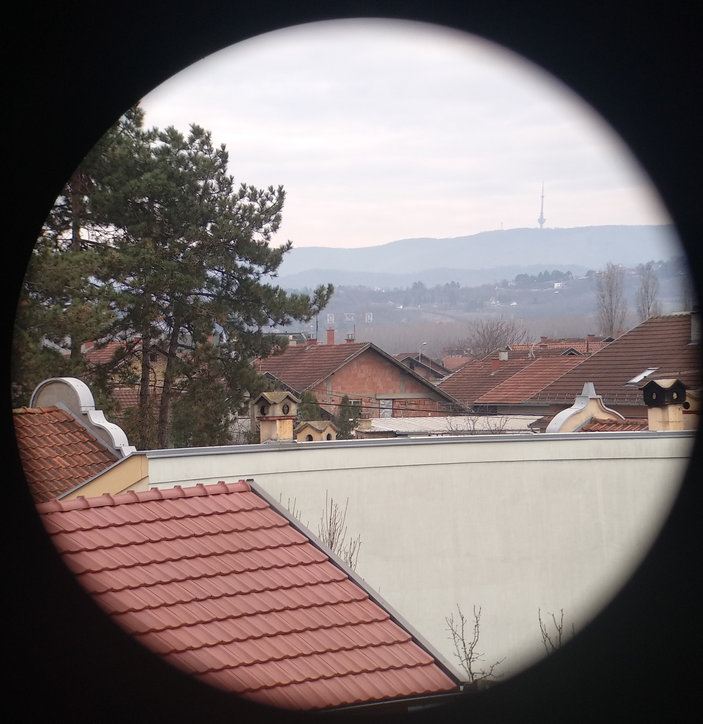
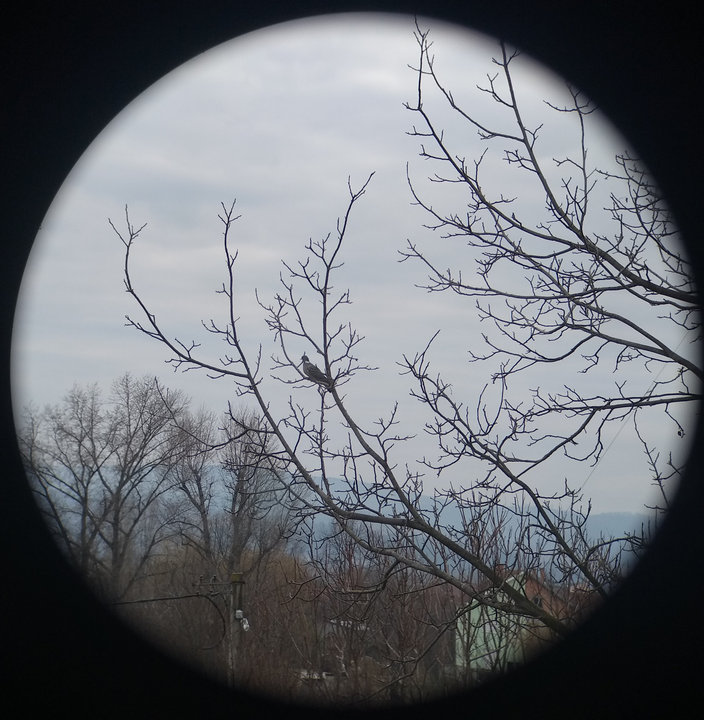

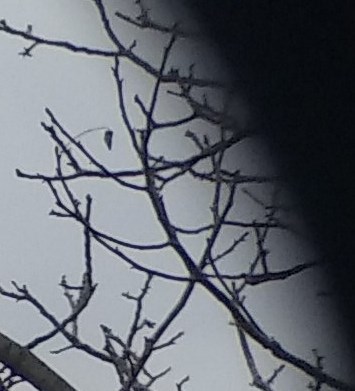
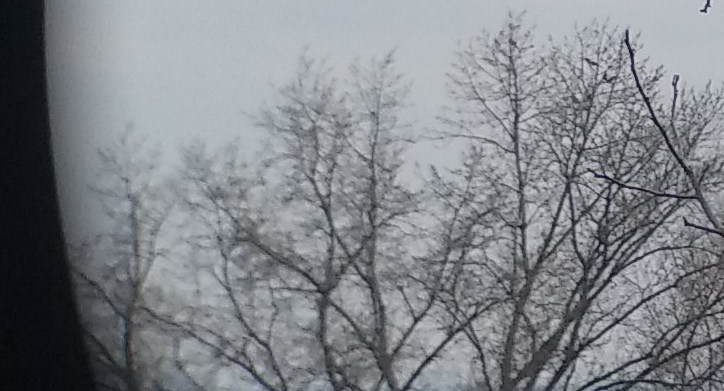





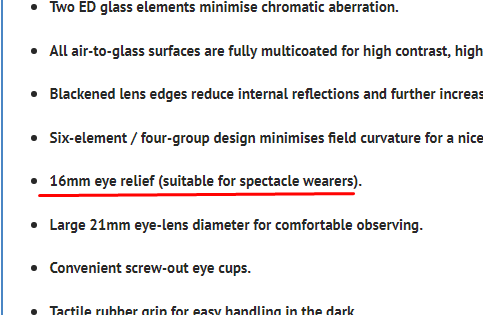
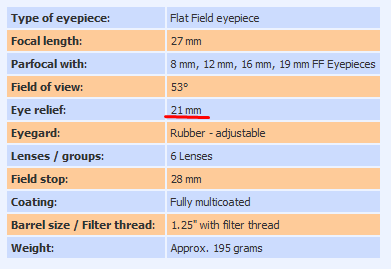

Afocal EEVA consideration - or why smart phone won't work as a good EEVA device
in EEVA - Discussion
Posted · Edited by Thalestris24
I'm pretty sure all the uncropped microscope images I've seen taken with a smartphone via the eyepiece show much vignetting. It's probably unavoidable - but always worth a fiddle! Maybe experiment to find the best distance and do something with the phone holder? The holder I ordered is this style but I won't get it until next week.
Louise
ps my phone isn't good with low light - but probably fine with a microscope!